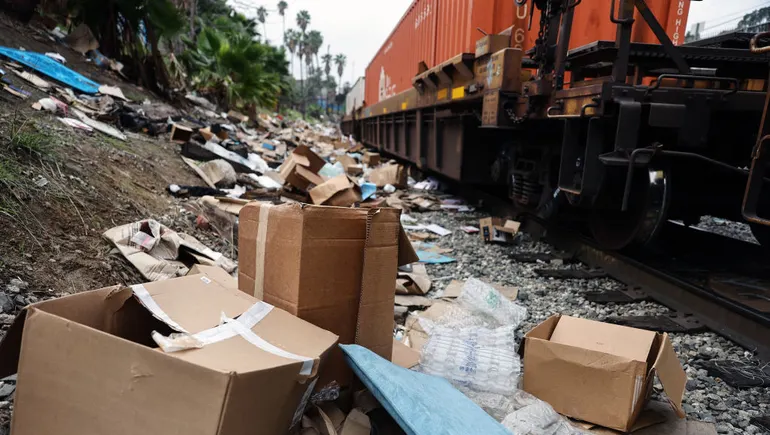Listen to the article
Cargo theft was in focus during a Senate Judiciary Comittee hearing focused on organized retail crime Tuesday, a departure from the previous emphasis on store-based shoplifting and smash-and-grabs.
“This threat has evolved to our supply chains, exposing significant vulnerabilities,” Committee Chair Chuck Grassley, Republican of Iowa, said in his opening remarks, citing the recent federal indictment of 11 defendants accused of “stealing nearly half a million dollars worth of Nike shoes” from a train.
Lawmakers and witnesses alike described supply chain vulnerabilities resulting in losses that affect not only businesses but also consumers and, in some cases, help fund criminal activities here and abroad.
As with other measurements of the scale of the problem, however, numbers are sloshing around with imprecise sourcing.
Last year cargo theft reached “historic highs,” up 27% year over year, “with estimated losses exceeding $1 billion,” and on pace to rise another 22% in 2025, according to testimony from David Glawe, president and CEO of the National Insurance Crime Bureau. But “other estimates suggest that cargo losses may reach up to $35 billion annually,” he also said.
Donna Lemm, chief strategy officer at freight company IMC Logistics, also told the committee that “cargo theft is robbing our supply chain to the tune of $35 billion per year.” This number, which is also cited by the American Trucking Associations, has been previously attributed to the Department of Homeland Security; a report from the DHS website and the U.S. Immigration and Customs Enforcement agency notes that “it is estimated that cargo theft accounts for $15-35 billion in loss annually” but doesn’t provide a source. DHS didn’t immediately return a request for more information regarding the source of those numbers or what they encompass.
The National Retail Federation, which in 2023 rescinded a widely circulated statistic on the financial impact of organized retail crime, by email deferred to NICB as well as ATA, the Association of American Railroads and CargoNet for cargo theft stats.
The AAR estimates that organized cargo theft cost major railroads more than $100 million last year. CargoNet counts 3,625 reported incidents across the U.S. and Canada, at various points in the supply chain, a 27% year-on-year increase.
Much like the situation of organized retail crime more broadly, imprecise data may undermine efforts to fight cargo theft. Data collection practices in this area “lack empirical evaluation and utility,” according to a study published in March by the Journal of Applied Security Research. Authors Ronald Burns of Texas Christian University and Charles Crawford of Western Michigan University note that this stems in part from the “decentralized organization approach to law enforcement” in the U.S.
This is something that the proposed legislation, re-introduced in both the U.S. Senate and the House of Representatives in April, is designed to address. The bill provides for “collaborative investigations” across federal and other jurisdictions, according to Sen. Grassley’s opening statement.
“We don’t know where to report. We need a centralized place to report,” Lemm said. “I explained the incident in St. Louis, where we basically had the [Bureau of Alcohol, Tobacco, Firearms and Explosives] calling us … It’s this ability to connect the dots — local, state and federal — that we don’t have today.”


